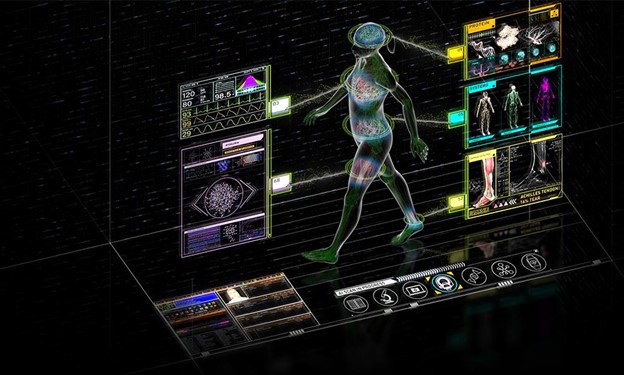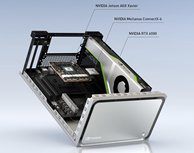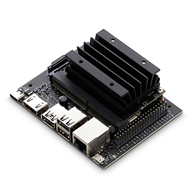 In this update, we look at the ways NVIDIA TensorRT and the Triton Inference Server can help your business deploy high-performance models with resilience at scale.
In this update, we look at the ways NVIDIA TensorRT and the Triton Inference Server can help your business deploy high-performance models with resilience at scale.
In Case You Missed It (ICYMI) is a series in which we spotlight essential talks, whitepapers, blogs, and success stories showcasing NVIDIA technologies accelerating real world solutions.
In this update, we look at the ways NVIDIA TensorRT and the Triton Inference Server can help your business deploy high-performance models with resilience at scale. We start with an in-depth, step-by-step introduction to TensorRT and Triton. Next, we dig into exactly how Triton and Clara Deploy complement each other in your healthcare use cases. Finally, to round things out our whitepaper covers exactly what you’ll need to know when migrating your applications to Triton.
TensorRT and Triton in Practice
On-Demand: Inception Café – Accelerating Deep Learning Inference with NVIDIA TensorRT and Triton
A step-by-step walkthrough applying NVIDIA TensorRT and Triton in conjunction with NVIDIA Clara Deploy.
Watch >
Whitepaper: Inception Café – Migrating Your Medical AI App to Triton
This whitepaper explores the end-to-end process of migrating an existing medical AI application to Triton.
Read >
On-Demand: Introduction to TensorRT and Triton A Walkthrough of Optimizing Your First Deep Learning Inference Model
An overview of TensorRT optimization of a PyTorch model followed by deployment of the optimized model using Triton. By the end of this workshop, developers will see the substantial benefits of integrating TensorRT and get started on optimizing their own deep learning models.
Watch >
Clara Imaging
On-Demand: Clara Train 4.0 – 101 Getting Started
This session provides a walk through the Clara Train SDK features and capabilities with a set of Jupyter Notebooks covering a range of topics, including Medical Model Archives (MMARs), AI-assisted annotation, and AutoML. These features help data scientists quickly annotate, train, and optimize hyperparameters for their deep learning model.
Watch >
On-Demand: Clara Train 4.0 – 201 Federated Learning
This session delivers an overview of federated learning, a distributed AI model development technique that allows models to be created without transferring data outside of hospitals or imaging centers. The session will finish with a walkthrough of Clara Train federated learning capabilities by going through a set of Jupyter Notebooks.
Watch >
On-Demand: Medical Imaging AI with MONAI Bootcamp
MONAI is a freely available, community-supported, open-source PyTorch-based framework for deep learning in medical imaging. It provides domain-optimized foundational capabilities for developing medical imaging training workflows in a native PyTorch paradigm. This MONAI Bootcamp offers medical imaging researchers an architectural deep dive of MONAI and finishes with a walkthrough of MONAI’s capabilities through a set of four Jupyter Notebooks.
Watch >
Clara Guardian
On-Demand: Clara Guardian 101: A Hello World Walkthrough on the Jetson Platform
NVIDIA Clara Guardian provides healthcare-specific pretrained models and sample applications that can significantly reduce the time-to-solution for developers building smart-hospital applications. It targets three categories—public safety (thermal screening, mask detection, and social distancing monitoring), patient care (patient monitoring, fall detection, and patient engagement), and operational efficiency (operating room workflow automation, surgery analytics, and contactless control). In this session, attendees will get a walkthrough of how to use Clara Guardian on the Jetson NX platform, including how to use the pretrained models for tasks like automatic speech recognition and body pose estimation.
Watch >
Clara Parabricks
On-Demand: GPU-Accelerated Genomics Using Clara Parabricks, Gary Burnett
NVIDIA Clara Parabricks is a software suite for performing secondary analysis of next generation sequencing (NGS) DNA and RNA data. A major benefit of Parabricks is that it is designed to deliver results at blazing fast speeds and low cost. Parabricks can analyze whole human genomes in under 30 minutes, compared to about 30 hours for 30x WGS data. In this session, attendees will take a guided tour of the Parabricks suite featuring live examples and real world applications.
Watch >
Clara AGX
On-Demand: Using Ethernet to Stream High-Throughput, Low-Latency Medical Sensor Data
Medical sensors in various medical devices generate high-throughput data. System designers are challenged to move the sensor data to the GPU for processing. Over the last decade, Ethernet speeds have increased from 10G to 100G, enabling new ways to meet this challenge. We’ll explore three technologies from NVIDIA that make streaming high-throughput medical sensor data over Ethernet easy and efficient — NVIDIA Networking ConnectX NICs, Rivermax SDK with GPUDirect, and Clara AGX. Learn about the capabilities of each of these technologies and explore examples of how these technologies can be leveraged by several different types of medical devices. Finally, a step-by-step demo will walk attendees through installing the software, initializing a link, and testing for throughput and CPU overhead.
Watch >
Recommended Hardware

Delivers real-time AI and imaging for medical devices. By combining low-powered, NVIDIA Jetson AGX Xavier and RTX GPU with the NVIDIA Clara AGX SDK and the NVIDIA EGX stack, it’s easy to securely provision and remotely manage fleets of distributed medical instruments.
Learn more >

Discover the power of AI and robotics with the NVIDIA Jetson Nano 2GB Developer Kit. It’s small, powerful, and priced for everyone.
Learning by doing is key for anyone new to AI and robotics, and this developer kit is ideal for hands-on projects.
Learn more >

Data science teams need a dedicated AI resource that isn’t at the mercy of other areas within their organization: a purpose-built AI system without compromise that can handle all the jobs that busy data scientists can throw at it, an accelerated AI platform fully optimized across hardware and software for maximum performance.
Learn more >
Inception Spotlight
NEW on NGC: Simplify and Unify Biomedical Analytics with Vyasa
Learn how Vyasa Analytics leverages Clara Discovery, Triton Inference Server, RAPIDS, and DGX to develop solutions for pharmaceutical and biotechnology companies. Vyasa Analytics solutions are available from the NVIDIA NGC catalog for rapid evaluation and deployment.
Read >
Do you have a startup? Join NVIDIA Inception’s global network of over 8,000 startups.
